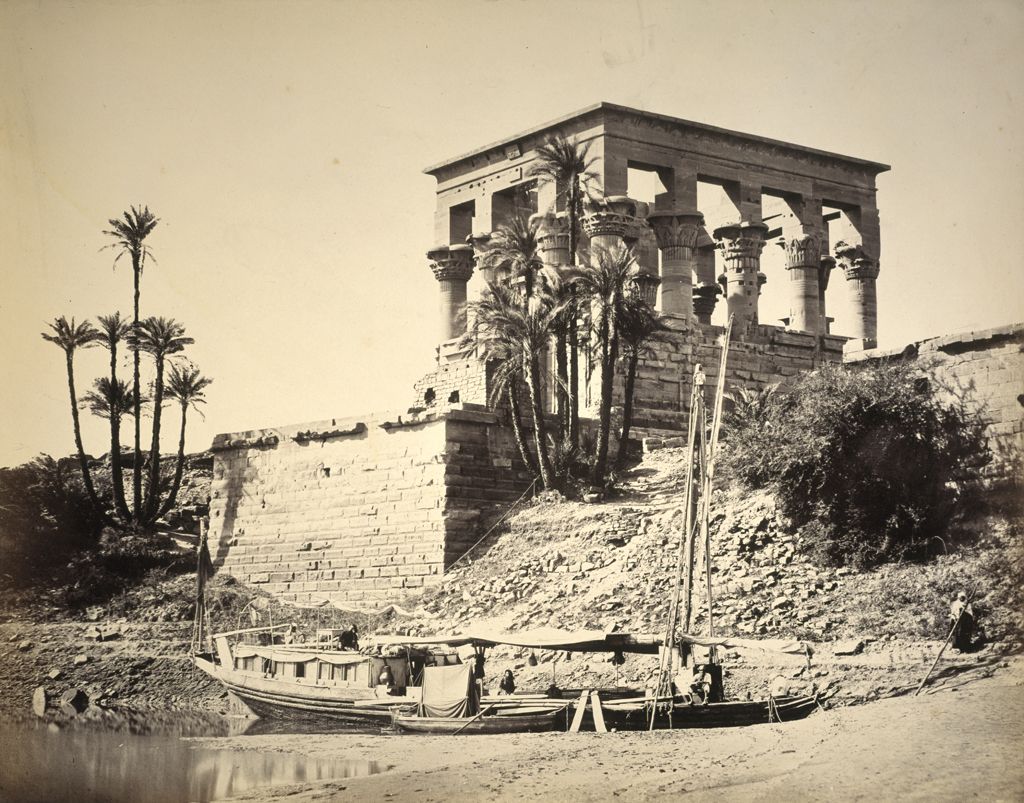Philae 1857

Hypaethral Temple Philae Francis Frith
Frith was one of the first of a new type of entrepreneurial photographer to establish himself as a retailer of scenic photographs on a large scale. During his travels he noted that tourists were the main consumers of the views of Italy, but armchair travelers bought scenes from other parts of the world in the hope of obtaining a true record, “far beyond anything that is in the power of the most accomplished artist to transfer to his canvas.” These words express the ambitious goal that Frith set for himself when he departed on his first trip to the Nile Valley in 1856 with his inventive friend Francis H. Wenham, who acted as lighting technician. ~Wikipedia high resolution

F.H. Wenham in 1866
He also made two other trips before 1860, extending his photo-taking to Palestine and Syria. In addition to photography, he also kept a journal during his travels elaborating on the difficulties of the trip, commenting on the “smothering little tent” and the collodion fizzing - boiling up over the glass. Frith also noticed the compositional problems regarding the point of view from the camera. According to Frith, “the difficulty of getting a view satisfactorily in the camera: foregrounds are especially perverse; distance too near or too far; the falling away of the ground; the intervention of some brick wall or other common object… Oh what pictures we would make if we could command our point of views.” An image he took known as the “Approach to Philae” is just one example which elaborates his ability to find refreshing photographic solutions to these problems. (cited from “A World History of Photography”). ~Wikipedia
When not taking photographs in the Middle East, he was back in England, printing them and reproducing them in delightful illustrated books - including his Egypt and Palestine photographed described by Francis Frithm 1858-60 and Egypt, Palestine and Sinai (1860) with text by Mrs Sophia Poole and Reginald Stuart Poole - both of which became very popular. ~Wikipedia